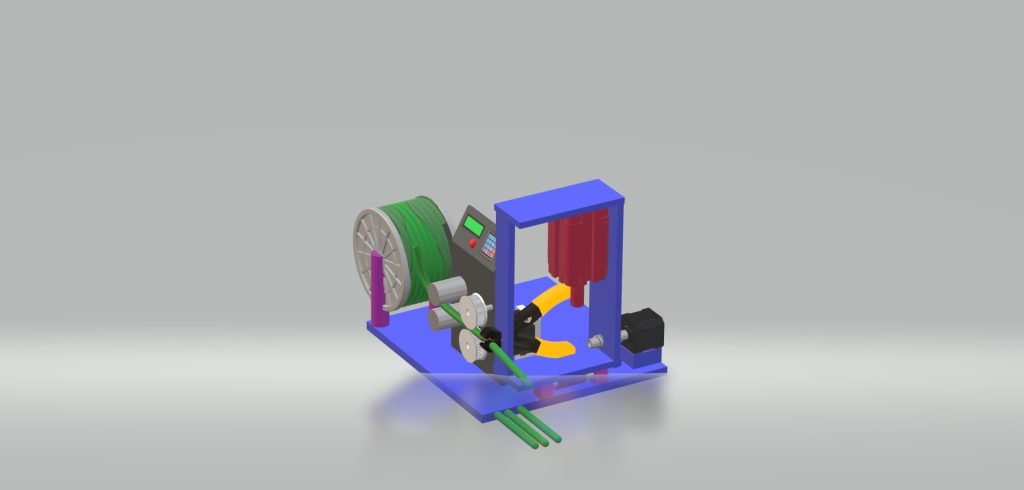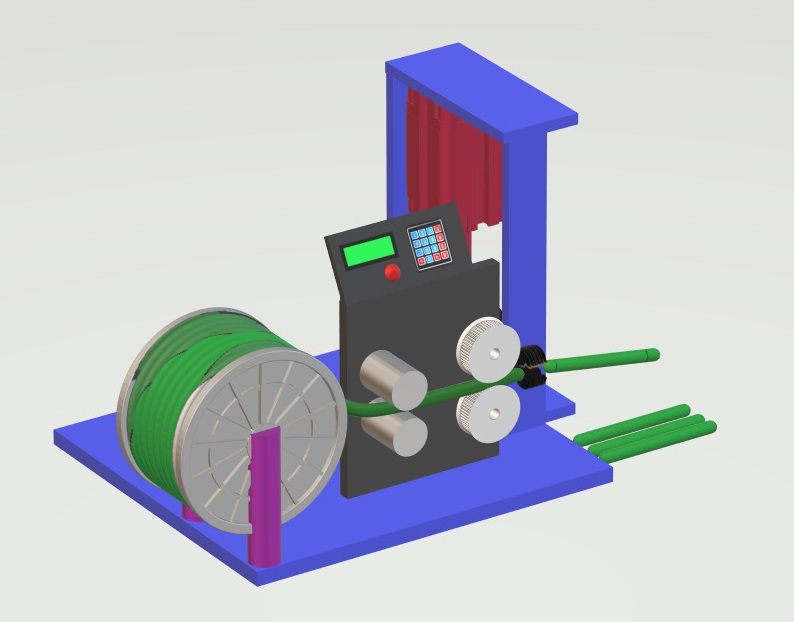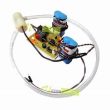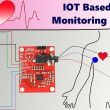Introduction
In today’s fast-paced industrial world, wires play an integral role in countless electronic products, industrial machines, and switchboards. For many of these applications, precision in cutting and stripping wires is crucial. That’s where an automatic wire cutter and stripper machine comes into play. This machine provides the perfect solution for cutting wires to specific lengths while also stripping the ends for connection, making it a must-have in industries that deal with wiring.
What is an Automatic Wire Cutter and Stripper Machine?
An automatic wire cutter and stripper machine is a specialized device designed to cut and strip wires with precision. By automating the process, this machine can handle wire preparation quickly and efficiently, eliminating the need for manual labor. The machine is primarily used in industries such as electronics, automotive, and manufacturing, where large quantities of wires are required to be processed.
Key Components of the Machine
The automatic wire cutter and stripper machine consists of several key components that work together to ensure smooth and accurate operation:
- Pneumatic Cylinder: Powers the cutting mechanism.
- Stepper Motors: Control the movement of the cutter and feeder systems.
- Guide Rods and Bearings: Provide stability and precision during operation.
- LCD Display & Keypad: Allow users to input wire size and control the machine.
- Controller Circuitry: Governs the operation and ensures accuracy.
- Rollers and Shafts: Facilitate the feeding of the wire.
- Supporting Frame, Base Frame, Mounts, and Joints: Provide structural integrity to the machine.
Working Mechanism
Wire Feeding System
At the heart of the machine is a roller-based feeding system, which pulls wire from a reel or spool. The feeder pulley draws the wire through a series of free rollers that ensure smooth movement. The feeder rollers apply just the right amount of non-frictional resistance, which helps the wire move smoothly while avoiding damage.
Cutter and Stripper Tool
The cutting and stripping mechanism is handled by a cutter assembly that moves back and forth along a guide rod system. This assembly is connected to a stepper motor that positions it for either cutting or stripping operations, depending on user input.
Stepper Screw and Pneumatic Cylinder
The stepper motor, combined with a pneumatic cylinder, facilitates precise cutting and stripping. The pneumatic cylinder applies the necessary force to perform the cut, while the stepper screw ensures accurate positioning.
User Input and Operation
A key feature of the machine is its user-friendly interface, which includes an LCD display and keypad. Users can input the desired wire length, and the machine will adjust accordingly to meet the specifications.
The Role of Automation in Wire Cutting and Stripping
Automating wire cutting and stripping streamlines the production process, saving both time and labor. Human error is reduced, and production lines can operate more consistently with fewer interruptions. Automated machines ensure consistent accuracy, which is essential when dealing with electrical components that rely on precise wire lengths and clean stripping.
Wire Feeding System
The wire feeding mechanism, powered by the feeder rollers and pulleys, is designed to pull the wire gently but firmly through the machine. The rollers apply just enough resistance to prevent slippage while ensuring the wire is not damaged during the process.
Cutting and Stripping Assembly
The assembly is versatile, shifting between cutting and stripping tasks. The pneumatic cylinder provides the force needed for cutting, while the stepper motor ensures that the wire is positioned correctly for each operation. The combination of these components allows for a smooth, automated process that requires minimal user intervention.
Control Mechanism
The user controls the machine through a simple interface, inputting the wire size using a keypad. The controller circuit interprets this input and adjusts the feeding, cutting, and stripping mechanisms to match the desired settings.
Step-by-Step Process of Wire Cutting and Stripping
- Wire Loading: The wire is loaded onto the machine via a reel or spool.
- User Input: The desired length and stripping details are input using the keypad.
- Feeding: The machine pulls the wire through the rollers.
- Cutting: The pneumatic cylinder drives the cutter for a precise cut.
- Stripping: The stripping mechanism removes the insulation from the ends of the wire.
Types of Wires that Can be Cut and Stripped
This machine is primarily designed to handle small-diameter wires, making it suitable for industries like electronics and automotive manufacturing. However, it is not suitable for large cables or wires with thick insulation.
Advantages of Using an Automatic Wire Cutter and Stripper Machine
- Efficiency: The machine significantly reduces the time required to cut and strip wires.
- Customizable: Wire lengths and stripping parameters can be easily adjusted.
- Precision: The automated nature ensures that each wire is cut and stripped to the exact specifications.
- Labor Saving: By automating the process, fewer workers are required, leading to reduced labor costs.
Disadvantages of the Machine
- Limited to Small Wires: This machine is primarily suitable for small-diameter wires, limiting its applications in industries that use larger wires.
- Does Not Remove Stripped Coverings: While the machine strips the wire, it does not remove the cut insulation.
Applications of Automatic Wire Cutter and Stripper Machines
These machines are widely used in various industries, including:
- Electronics Manufacturing: For cutting wires used in circuit boards and other components.
- Automotive Industry: For wiring harnesses and other electrical components.
- Switchboard Production: In switchboards and control panels where precise wiring is critical.
Future Advancements in Automatic Wire Cutting and Stripping Technology
As technology continues to evolve, these machines are likely to see improvements. Future versions may support larger wire diameters, offer fully automated workflows, and even incorporate AI for more intuitive operation.
Reference sources
Research Papers and Technical Journals
IEEE Xplore Digital Library (https://ieeexplore.ieee.org): Look for research papers on automation in wire cutting and stripping.
ScienceDirect (https://www.sciencedirect.com): A resource for engineering and automation studies focusing on machinery design.
Manufacturers and Industry Websites
Komax (https://www.komaxgroup.com): A leading manufacturer of automated wire processing machines.
Schleuniger (https://www.schleuniger.com): Provides detailed product catalogs and case studies related to wire cutting and stripping technology.
Artos Engineering (https://www.artosengineering.com): Offers insights on the latest in wire processing automation.
YouTube Tutorials and Demonstrations
YouTube: Search for “automatic wire cutting and stripping machine demonstrations” to find tutorials and product demos. Many manufacturers upload machine walkthroughs and operational guides.
DIY and Project Websites
Instructables (https://www.instructables.com): Contains step-by-step guides for DIY wire cutter and stripper projects.
Hackaday (https://hackaday.com): A great platform for electronics and automation enthusiasts sharing personal projects and innovations.
Product Documentation and User Manuals
Mecmesin (https://www.mecmesin.com): Look for product datasheets and manuals on wire cutting and stripping machines for more technical details.
Front View
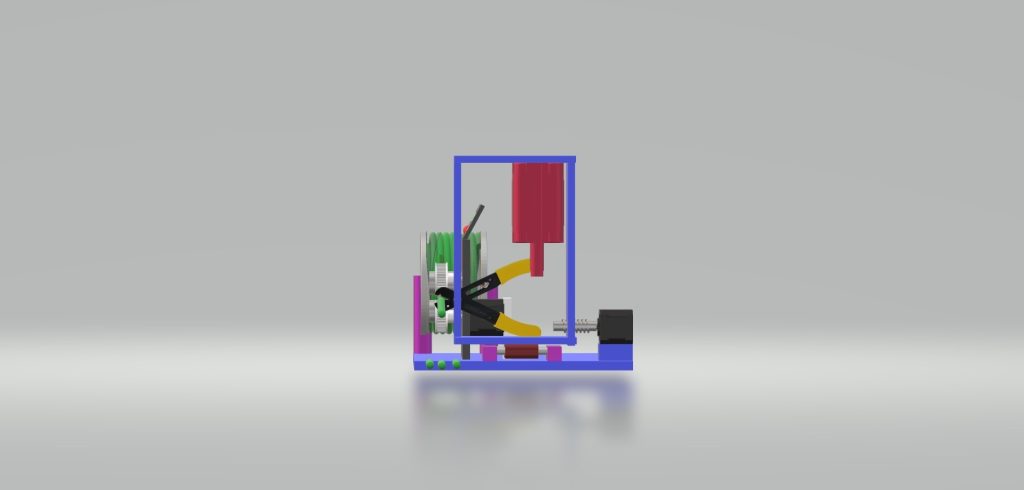
Side View
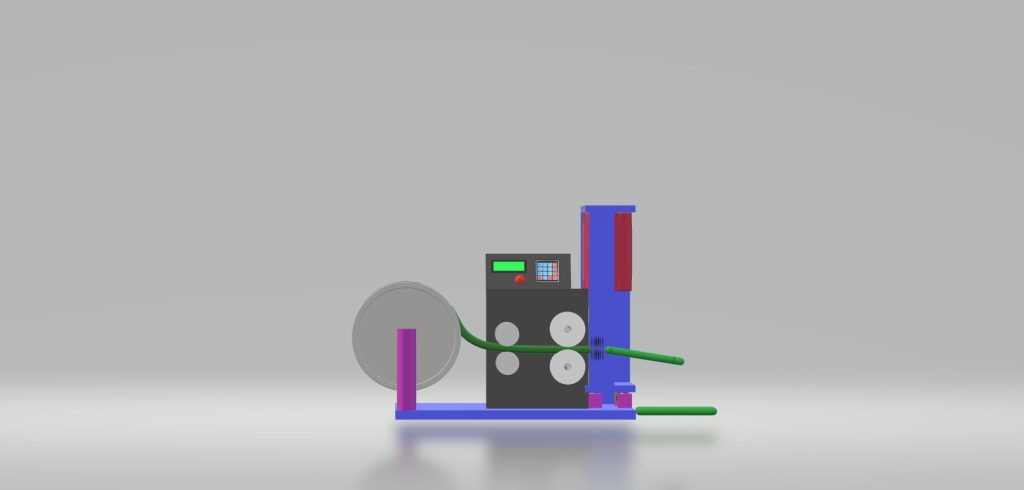
3D Views
